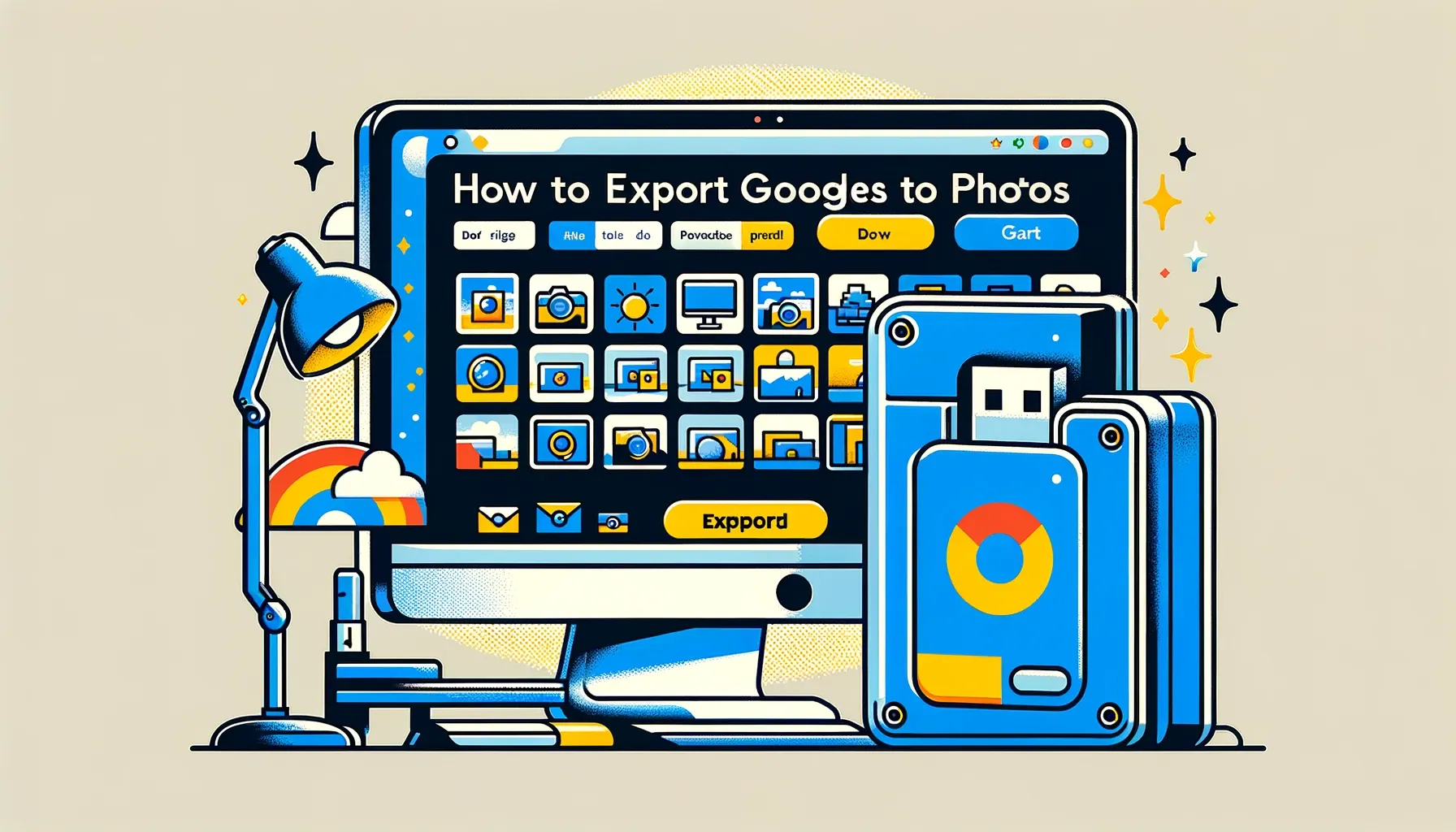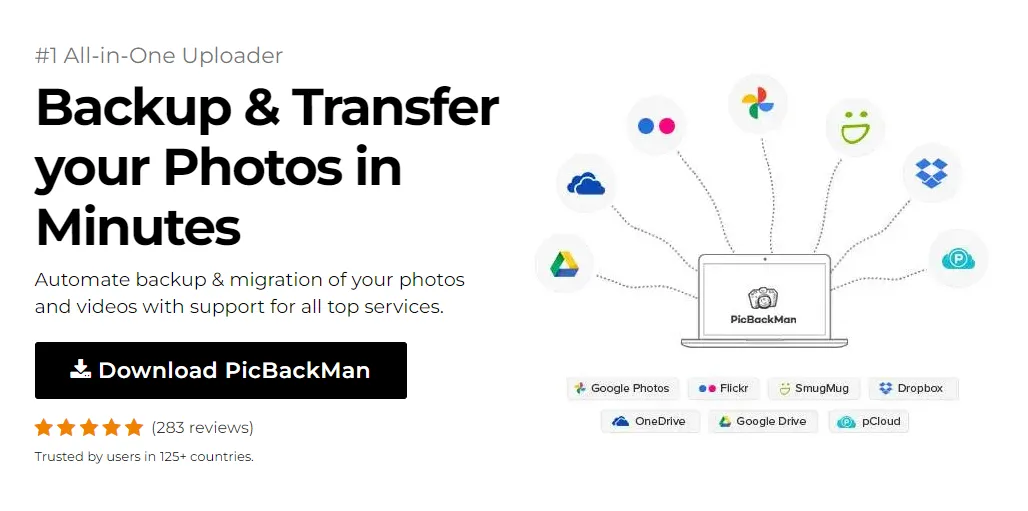
How to Export Google Photos to Hard Drive


Google Photos is a great cloud storage service for photos and videos. However, you may want to download your content to store locally on an external or internal hard drive. Exporting Google Photos allows you to backup your data or transfer it to another platform. In this article, we’ll explore the options for downloading your Google Photos and moving them to hard drive storage.
Why Export Google Photos?
Here are some reasons you may want to transfer your Google Photos library to a hard drive:
-
Backup your data - hard drive backups give you physical control rather than relying solely on the cloud. This keeps your photos safe if something happens to your Google cloud storage.
-
Save hard drive space - you can remove content from Google Photos after exporting to free up cloud storage. Local hard drive copies let you archive content without using cloud capacity.
-
Migrate to another platform - download your photos and videos if you want to move away from Google Photos to another storage service or local photo management system.
-
View files offline - external hard drives give you access to your Google Photos without an internet connection for offline viewing and editing options.
Choosing Drive Storage Options
When exporting your photos from Google, you’ll first want to choose where to download the files on your local storage environment. Here are some good options:
-
External hard disk - a portable external drive lets you easily store personal data like photos in a shareable format. Look for an HDD or SSD with ample capacity for exporting image and video files.
-
Desktop hard drive - if you want to directly access your Google Photos from a computer for editing or organization, download to an internal or external hard drive attached to that device.
-
NAS (network-attached storage) - store your exported Google Photos to shared storage on a home server for household access from multiple devices on the same WiFi network.
Using Google Takeout to Export
The easiest way to export your Google Photos library is using Google Takeout. This service creates an archive file with all your content to download to a hard drive:
Downloading Google Takeout
First, go to takeout.google.com and log into your Google account. Click the Deselect all button to clear any pre-checked services.
Selecting Google Photos
Under the section labeled "Create a new export," check the box next to Google Photos. Leave the other options unselected. Then scroll down and click Next step.
Configuring Export Settings
On the following screen, choose file type and size options:
- Select 1 GB file size
- Choose TAR format for compressed archives
Leave the Delivery method as Send download link via email. Then click Create Export.
Downloading the Export File
Once Google prepares the archive, you'll receive an email with download links. Click the link and save the file to your chosen hard drive location. Extract the TAR file to access your Google Photos folder structure containing all exported content.
Transferring Files from Google Drive to Hard Drive
An alternative is to copy over content already saved in your Google Drive. This works best for individual downloads instead of full Google Photo libraries:
Using Desktop Google Drive App
Install the Backup and Sync utility from Google to link folders on your hard drive to Google Drive. Then simply copy files over within the linked Google Drive folder on your computer.
Backup & Transfer your Photos in Minutes
Trusted by users in 125+ countries.
Using Third-Party Apps
Apps like Mover.io also let you migrate or synchronize specific folders from Google Drive to local or external hard drives. The software integrates directly with Google's cloud service for simple file transfers.
Viewing Exported Google Photos Files
Once you've moved your Google Photos to hard drive storage, there are a couple ways to access them:
Browsing Files in Folders
Navigate through your hard drive files and folders using your operating system's file explorer to find your exported Google Photos. View thumbnails and open images individually with compatible software.
Viewing Files in Photo Software
For the best viewing experience, import your exported Google Photos files into dedicated photo workflow software like Adobe Lightroom Classic. This displays all your content in a photography-focused interface with enhanced editing tools.
Tips for Successful Google Photo Exports
To ensure your Google Photo exports transfer smoothly to hard drive, keep these tips in mind:
Exporting Albums Separately
Takeout will grab your entire Google Photos history. To just extract specific albums, you’ll need to individually download those albums from the Google Photos web interface prior to exporting your full library.
Checking Export File Size
Before downloading, verify you have ample storage capacity on your designated hard drive to contain the export from Google Takeout or Google Drive. Storage amounts will vary drastically depending on how many photos you've stored in the cloud.
Backing Up Exports
Once you’ve gone through the export process, don’t consider your hard drive copies the only copies of those Google Photos. Maintain backups of the files on an additional drive or by keeping reduced copies in cloud storage in case the exports become corrupted or lost.
Alternative Export Options
If Takeout doesn't suit your needs for getting Google Photos off the cloud, explore these options too:
Bluetooth Transfer
You can send individual Google Photos files from your mobile device or tablet to hard drives capable of receiving Bluetooth transfers. Useful for single image copies.
Email Attachment
Similarly, email yourself photo attachments from Google Photos to save locally. This works for small selections of content.
Conclusion
By using Google Takeout or copying files through Google Drive, you now have several approaches to choose from for exporting your Google Photos library to external or internal hard drives. This allows you to create offline backups of your images, free up cloud capacity, migrate to different platforms, or just directly access your photo collection from local devices.
Remember to designate adequate hard drive space, individually export specific albums if needed, verify transfer completeness, and continue backing up the exports afterward. Following the tips outlined here will ensure you can successfully and smoothly migrate those precious Google Photos over to reliable hard drive storage.
Quick Tip to ensure your videos never go missing
Videos are precious memories and all of us never want to ever lose them to hard disk crashes or missing drives. PicBackMan is the easiest and simplest way to keep your videos safely backed up in one or more online accounts. Simply Download PicBackMan (it's free!), register your account, connect to your online store and tell PicBackMan where your videos are - PicBackMan does the rest, automatically. It bulk uploads all videos and keeps looking for new ones and uploads those too. You don't have to ever touch it.
FAQs
Can I export Google Photos to an SD card?
Yes, you can save your exported Google Photos files from Takeout or Google Drive to an SD card inserted into your computer. This allows you to easily transfer them to devices with SD card slots.
How long does exporting from Google Takeout take?
It can take hours up to a full day for Google to prepare your archive for larger libraries once requested through Takeout. This depends on the number of items you’re exporting from Google Photos.
What file formats are my Google Photos exports saved as?
The default format is JPEG for images and MP4 for videos when using Takeout, preserving what was originally uploaded. You can select additional formats through Takeout’s settings if desired prior to export.
Can I export my Google Photos to an external hard drive on a mobile device?
For mobile transfer, use Takeout and email yourself the export file, then open the attachment and save it directly to external USB storage attached to your phone or tablet with the proper adapter or connectivity.
What happens to my Google Photos after I export them?
The items still exist in your Google Photos library after export. To remove them after backup simply delete individual items or whole exported albums if you want to free up cloud storage capacity.
Backup & Transfer your Photos in Minutes
Automate backup & migration of your photos & videos with support for all top services.
Trusted by users in 125+ countries.










